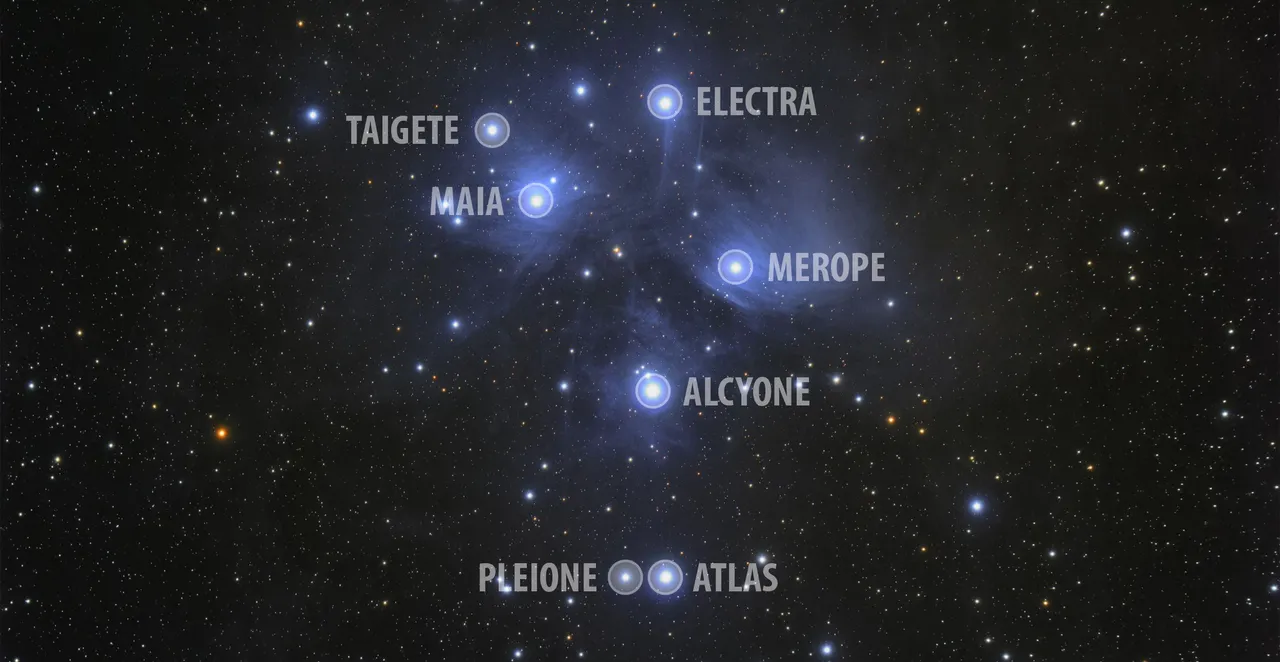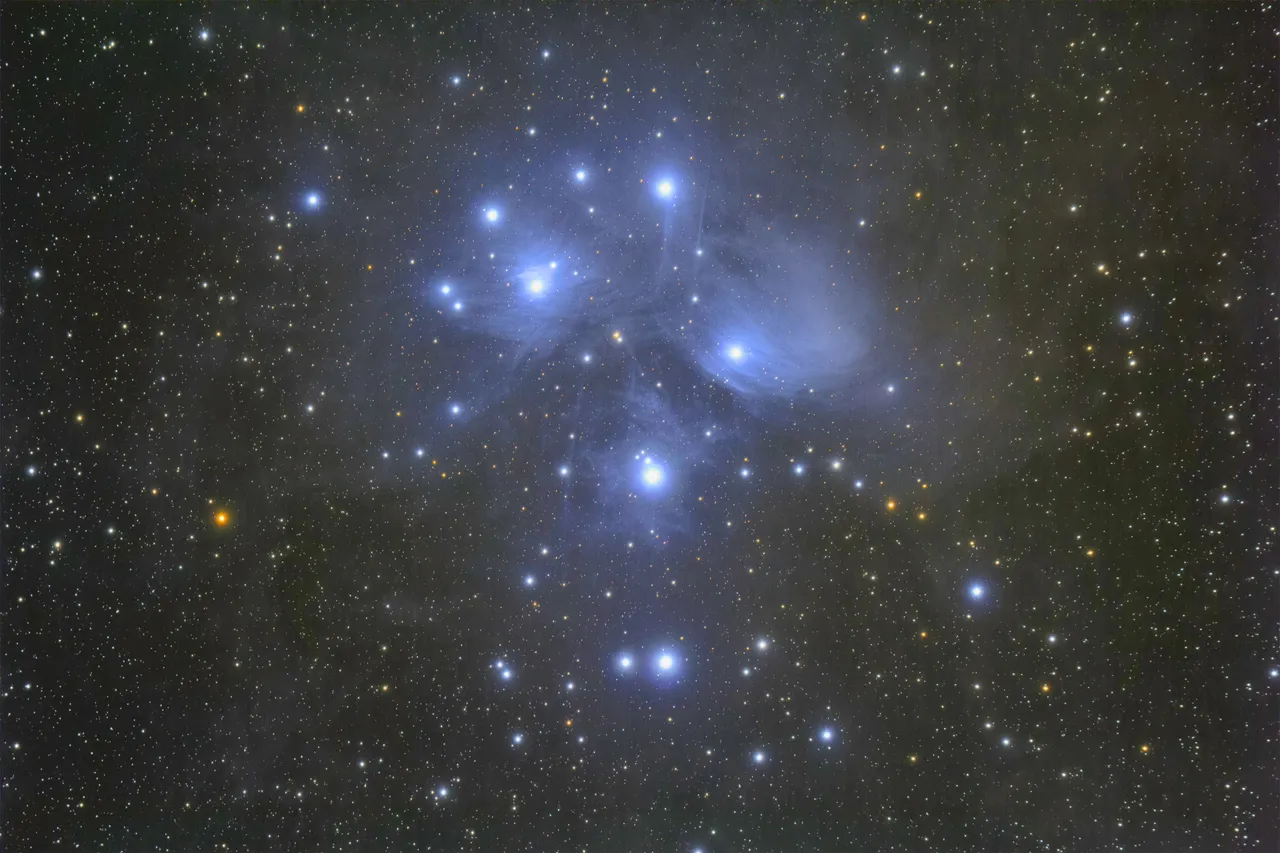Hi guys, welcome back! Today we will talk about "sisters". No, not that type of sisters... These sisters are 440 light years from us. They are inseparable and walk together for about tens of millions of years: they are Pleiades.
At 440 light years from us resides one of the most beautiful cluster in the Milky Way: the Pleiades. This is an incredible object of the celestial vault. More precisely it is an open cluster with nebulosity and you can find it in the Taurus constellation.
It is very very bright (it actually contains over 1000 stars) and easily recognizable during the winter months. I'm sure you have already seen it by accident. If don't... try to take a look at the sky during the winter. It will not disappoint you, promised... ;) [Click to zoom]
The brightest stars of the cluster are often called "seven sisters" by astronomers in reference to greek mythology. They are: Alcyone (the brightest), Atlas, Elettra, Maia, Merope, Taigete and Pleione.

The Seven Sisters
But why is everything blue? The stars of this cluster are relatively young (only 100 million years) and therefore they are in a phase of maximum activity. Under these conditions stars are usually very hot (up to 15000°K) and emit a lot of energy in the blue part of the visible spectrum (hence the intense blue color).
As if that was not enough the Pleiades are surrounded by a giant cloud of interstellar dust. These clouds are illuminated by the same stars of the cluster giving birth to this huge beautiful reflection nebula.

A detail of the nebulosity around Merope. This nebulae are like waves in space...
Reflection Nebulae are exactly the opposite of the so-called Emission Nebulae. The first ones are usually cold and illuminated by nearby stars (and therefore reflect), the latter are hotter and emit light because they are in particular energy conditions (this emitted light is usually red/purple).
Here an amazing and clear example offered by our universe:

On the left the California Nebula in Perseus, on the right Pleiades
The California Nebula (Yes, I know. A lot of imaginative!) is just one of these emission nebulae.
But we'll talk about it soon... ;) Clear skies guys!
And remember as usual: if you need help with astro/photography or if you want to talk about equipment/processing just comment below ;) Bye!

For the most curious: I've used a Canon EOS 60D (unmodded) and a flattened TS Apo 80/480mm on a guided HEQ5 mount. Photos acquired with AstrojanTools. Calibration and stacking made with MaximDL and post-processing with PixInsight LE and Photoshop.
480mm - f/6 - ISO800
Light Frames: 41x 360''
Dark Frames: 27x 360''

Previously on the VaccaBoard:
 The Milky Way Core
The Milky Way Core
 The Antares and Rho Ophiuchi Regions
The Antares and Rho Ophiuchi Regions

Alessio Vaccaro
Follow @ilvacca and upvote if you want more contents like this one. Thank you

